Success stories: Tales of improving our native biodiversity
Tunyalee Martin/GIST
January 2001
Photographs
Click
on the images below to view photographs related
to this success story.
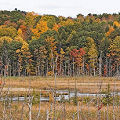
|
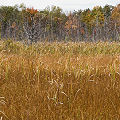
|
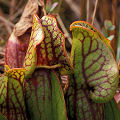
|
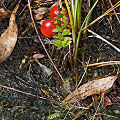
|
||||
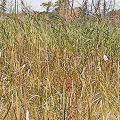
|
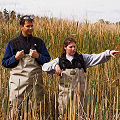
|

|
|||||
The Setting
It is called a bog, but Kampoosa Bog is actually a lake basin fen and it is
one of just two lake basin fens in the northeastern USA. Kampoosa Bog's
open fen area covers 20 acres, but provides habitat for 21 rare species,
nineteen of which are listed as rare by the state of Massachusetts.
Unfortunately, its native plant species such as water sedge
Carex aquatilis, twig-rush (Cladium mariscoides), and cranberry
(Vaccinium macrocarpum), were in danger of being outcompeted by
expanding phragmites stands.
The Invader - Phragmites (Phragmites australis)
Phragmites is native to North America but in many areas of the northeast
and upper midwest it spreads very aggressively in wet areas, crowding out
other freshwater and tidal plant species. It is possible that the strains
native to North America are mixing with more aggressive, European varieties.
Dense, single-species stands of
reeds up to 15 feet (4.6 m) tall disrupt important habitat for native
animal species, and decrease overall biological diversity.
A Success Story
What makes this success story so extraordinary is that the common reed was
prevented from spreading within the fen mat by helpful volunteers. Local
citizens, high school groups and organizations such as People Making a
Difference, and Landmark Volunteers contributed to preventing the spread of
three acres of phragmites. For six years, volunteers cut reeds at chest
height in the late summer. Phragmites flowers during this time of year and
most of the reed's energy is above ground. The cut reeds were bagged and
Mr. Dicken Crane, owner of Holiday Farms, contributed by composting the
clippings.
Phragmites rhizomes may extend 3 feet (1 m) deep underground and are capable of resprouting. Therefore, a unique method of pesticide application follows the cutting, delivered by certified herbicide applicators armed with squirt bottles. After they were cut the hollow reed "stumps" were individually filled with glyphosate herbicide (Rodeo). The herbicide was absorbed and transported to the rhizome, and the underground part of the plant was killed. While glyphosate is a non-selective herbicide, this application method holds the herbicide within the stems, preventing contact with non-target plants.
Yearly monitoring and expedient treatment prevents phragmites from spreading further. Most populations of phragmites are being driven off the fen mat and back into the surrounding swamps. Desirable native species are expanding in number every year and recolonizing areas phragmites once threatened to overwhelm.
More Information
The Nature Conservancy of Massachusetts has information about
the Kampoosa Bog and will be putting this on the web soon. A review article
with more detailed information about phragmites, including a description of
its diagnostic characteristics, range, ecology, and methods for its control,
is available on the TNC Wildland Invasive Species Team website
(http://tncinvasives.ucdavis.edu/esadocs/phraaust.html).
References
Lowenstein, F. 2000. Personal communication.
This document in other formats: MS Word, Adobe Acrobat
This article may be treated as a press release and may be quoted by the media in part or in full. Publication quality versions of images on this page can be obtained from the Wildland Invasive Species Team by sending email to bamrice(at)ucdavis.edu.


